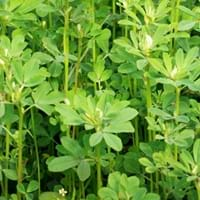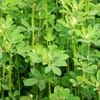Life Span
Annual
Perennial
Type
Fruit, Vegetable
Perennial
Origin
Mediterranean, Middle East
Eastern Europe
Types
Not Available
Not Available
Habitat
Fields, Grassland, Hillside
Terrestrial
USDA Hardiness Zone
5-9
4-9
AHS Heat Zone
Not Available
9-1
Sunset Zone
Not Available
1a, 1b, 2a, 2b, 3a, 3b, 4, 5, 6, 7, 8, 9, 10, 11, 12, 13, 14, 15, 16, 17, 18, 19, 20, 21, 22, 23, 24
Habit
Narrow Upright/Fastigiate
Clump-Forming
Flower Color
White
Yellow, Lavender, Blue Violet
Flower Color Modifier
Bicolor
Bicolor
Fruit Color
Yellow
Not Available
Leaf Color in Spring
Green
Green, Sea Green
Leaf Color in Summer
Green
Green, Sea Green
Leaf Color in Fall
Green, Light Green, Light Yellow
Green, Sea Green
Leaf Color in Winter
Light Green
Light Green
Leaf Shape
oblong or obovate
Lanceolate
Plant Season
Spring, Fall
Spring, Summer
Sunlight
Full Sun
Full Sun, Partial Sun
Growth Rate
Medium
Medium
Type of Soil
Clay, Loam, Sand
Loam, Sand
The pH of Soil
Acidic, Neutral
Neutral
Soil Drainage
Well drained
Well drained
Bloom Time
Early Spring, Spring
Spring, Late Spring, Early Summer
Tolerances
Drought
Drought
Where to Plant?
Container, Ground, Pot
Ground
How to Plant?
Seedlings
By dividing rhizomes, tubers, Seedlings
Plant Maintenance
Medium
Medium
Watering Requirements
Keep the Soil well drained, Needs a lot of water initially
Average Water Needs, Do Not over Water
In Summer
Lots of watering
Lots of watering
In Spring
Moderate
Moderate
In Winter
Average Water
Average Water
Soil pH
Acidic, Neutral
Neutral
Soil Type
Clay, Loamy, Sandy
Loam, Sand
Soil Drainage Capacity
Well drained
Well drained
Sun Exposure
Full Sun, Partial Sun, Partial shade
Full Sun, Partial Sun
Pruning
Remove damaged leaves, Remove dead branches, Remove dead leaves
Remove damaged leaves, Remove dead branches, Remove dead leaves
Fertilizers
All-Purpose Liquid Fertilizer
All-Purpose Liquid Fertilizer
Pests and Diseases
Aphids, Cercospora leaf spot, Charcoal rot, fungus, Red blotch
Red blotch
Plant Tolerance
Drought
Drought
Flower Petal Number
Single
Single
Foliage Texture
Medium
Coarse
Foliage Sheen
Matte
Matte
Attracts
Aphids, Leafminer
Hummingbirds
Allergy
Avoid during Pregnancy, Chest Pain, Diarrhea, Skin irritation
Skin irritation
Aesthetic Uses
Not Used For Aesthetic Purpose
Showy Purposes
Beauty Benefits
Acne, Anti-ageing, Moisturizing, Removes dandruff
Not Available
Environmental Uses
Air purification
Air purification
Medicinal Uses
Manganese, Potassium, Vitamin A, Vitamin B, Vitamin C
No Medicinal Use
Part of Plant Used
Leaves, Stem
Not Available
Other Uses
Food for animals, Used as a nutritious food item, Used for its medicinal properties
Used as Ornamental plant
Used As Indoor Plant
Yes
No
Used As Outdoor Plant
Yes
Yes
Garden Design
Edible, Herb / Vegetable, Vegetable
Alpine, Edging, Mixed Border, Rock Garden, Wall
Botanical Name
Trigonella foenum-graecum
IRIS pumila
Common Name
Fenugreek
Dwarf Iris
In Hindi
मेंथी
Dwarf Iris
In German
Bockshornklee
Zwergiris
In French
Fenugrec
Dwarf Iris
In Spanish
Fenogreco
Enano Iris
In Greek
Τριγωνέλλα
νάνος Ίρις
In Portuguese
fenacho
Dwarf Iris
In Polish
Kozieradka
Dwarf Iris
In Latin
Graecum
Iris Dwarf
Phylum
Magnoliophyta
Magnoliophyta
Class
Magnoliopsida
Liliopsida
Family
Fabaceae
Iridaceae
Clade
Angiosperms, Eudicots, Rosids
Angiosperms, Monocots
Subfamily
Faboideae
Iridoideae
Number of Species
Not Available
Importance of Fenugreek and Dwarf Iris
Want to have the most appropriate plant for your garden? You might want to know the importance of Fenugreek and Dwarf Iris. Basically, these two plants vary in many aspects. Compare Fenugreek and Dwarf Iris as they differ in many characteristics such as their life, care, benefits, facts, etc. Every gardener must at least have the slightest clue about the plants he wants to plant in his garden. Compare their benefits, which differ in many ways like facts and uses. The medicinal use of Fenugreek is Manganese, Potassium, Vitamin A, Vitamin B and Vitamin C whereas of Dwarf Iris is No Medicinal Use. Fenugreek has beauty benefits as follows: Acne, Anti-ageing, Moisturizing and Removes dandruff while Dwarf Iris has beauty benefits as follows: Acne, Anti-ageing, Moisturizing and Removes dandruff.
Compare Facts of Fenugreek vs Dwarf Iris
How to choose the best garden plant for your garden depending upon its facts? Here garden plant comparison will help you to solve this query. Compare the facts of Fenugreek vs Dwarf Iris and know which one to choose. As garden plants have benefits and other uses, allergy is also a major drawback of plants for some people. Allergic reactions of Fenugreek are Avoid during Pregnancy, Chest Pain, Diarrhea and Skin irritation whereas of Dwarf Iris have Skin irritation respectively. Having a fruit bearing plant in your garden can be a plus point of your garden. Fenugreek has no showy fruits and Dwarf Iris has no showy fruits. Also Fenugreek is flowering and Dwarf Iris is flowering. You can compare Fenugreek and Dwarf Iris facts and facts of other plants too.



